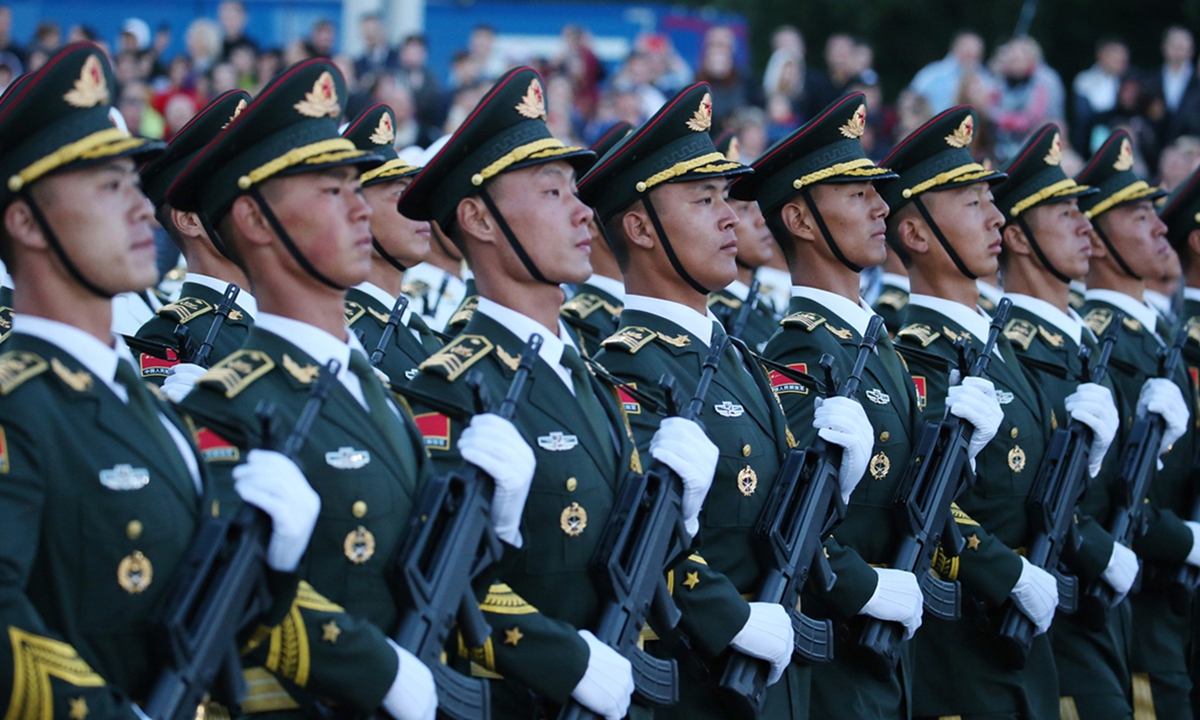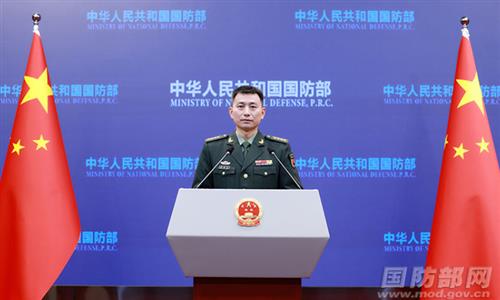China's military power only makes those with malicious intent feel 'threatened': Global Times editorial

PLA Photo:VCG
The US Department of Defense (DoD) released its annual report to Congress on "Military and Security Developments Involving the People's Republic of China" (China military power report) on Thursday. People familiar with China-US relations know that since 2000, the Pentagon has issued this report every year, which basically compiles some public information, including media reports with unknown sources, into a "collection of annual China threat theories" in a bid to request funding from Congress and deceive allies into buying US weapons. As a result, one can imagine the level of professionalism in this report.
The China military power report can be roughly divided into three parts. First, it assesses China's current military capabilities without any real basis. Second, it selectively hypes China's military activities over the past year. Third, it distorts and speculates about China's military intentions. This year's report has an additional section - complaints about China's "resistance" to military-to-military communications with the US.
By combining these factors, the US attempts to fabricate a terrifying image of China, whose military strength is rapidly increasing, military behavior is becoming more aggressive, and "military ambitions" are insufficiently transparent. All the malicious speculations and smears about China's military in the report are far from the reality of China's military situation, but instead resemble a reflection of the US military itself.
The Pentagon's report always focuses on China's modernization of its nuclear capabilities and makes groundless speculations and comments on the situation in the Taiwan Straits. It is worth noting that this year's report claims that the DoD estimates that China possessed more than 500 operational nuclear warheads as of May 2023 - on track to exceeding previous projections, and that China will probably have over 1,000 operational nuclear warheads by 2030. In the 2020 report, the DoD made its first public estimate of China's nuclear warheads, and said its nuclear arsenal was slightly more than 200. In just three years, the number of China's nuclear warheads in the US report has more than doubled. Common sense dictates that on such a significant issue, the US report has not shown the required rigor. The specific number depends on the needs of the Pentagon and Washington at different times.
The US needs to understand two points. First, China pursues the strategic thinking of active defense, and the deployment of nuclear forces is part of its defense strategy. However, no matter how many nuclear warheads China has or how strong its defense capabilities are, they will not become violent tools for China to dominate the world, as is the case with the US military. Instead, they are a strong guarantee for China to safeguard its national sovereignty, security, and development interests, as well as regional and global peace. Second, the development of China's defense force has its own established pace, it does not target any specific country, but it firmly safeguards China's sovereignty, security, and developmental interests. As long as China has not achieved reunification and external forces continue to interfere without restraint, China will not cease to strengthen its defense capabilities.
In addition, many have also noticed that this year's report highlights the PLA's so-called coercive and risky operational behavior in the past two years. The Pentagon even presented videos and photos of Chinese military aircraft "intercepting US military aircraft flying in international airspace with dangerous maneuvers," claiming Chinese aircraft have adopted more dangerous, coercive and provocative actions toward the US and its allies in the airspace of East China Sea and South China Sea. However, what the Pentagon never mentions is that this so-called international airspace is primarily located along China's coast, with some US aircraft even intruding into China's territorial waters, while none of these incidents occurred along the US coast. Doesn't this already make the point clear? If we were to reverse the situation, in an atmosphere where even harmless balloons create a sense of impending crisis in Washington, the reaction from the US side would likely be far more significant if Chinese warships or aircraft appeared in international waters and airspace outside San Francisco Bay, beyond just what is termed "dangerous intercepts."
The US, with the most powerful armed forces in the world, has become one of the most enthusiastic proponents of the so-called "Chinese military threat" theory, which in itself is abnormal. If the US had no ill intentions toward China, has no desire to interfere with China's reunification efforts, and has no intention of conflict or suppression, it would not perceive such a strong "threat" from China's peaceful armed forces. In the past year, the actions of the US military have made it even clearer who the escalating threat in the Asia-Pacific region truly is and what poses the greatest challenge to peace and stability in that region.
At roughly the same time as the report's release, multiple US military bases in the Middle East came under consecutive attacks. The US State Department also issued a rare worldwide caution alert citing potential for terrorist attacks, demonstrations or violent actions against US citizens and interests. All of these factors indicate that the real danger facing the US does not actually stem from its imagined challenge to its position of leadership by China. Rather, it arises from its excessive interventions and the blowback resulting from creating tension and inciting the risk of war on a global scale. This is what the US truly needs to pay attention to and reflect upon.

